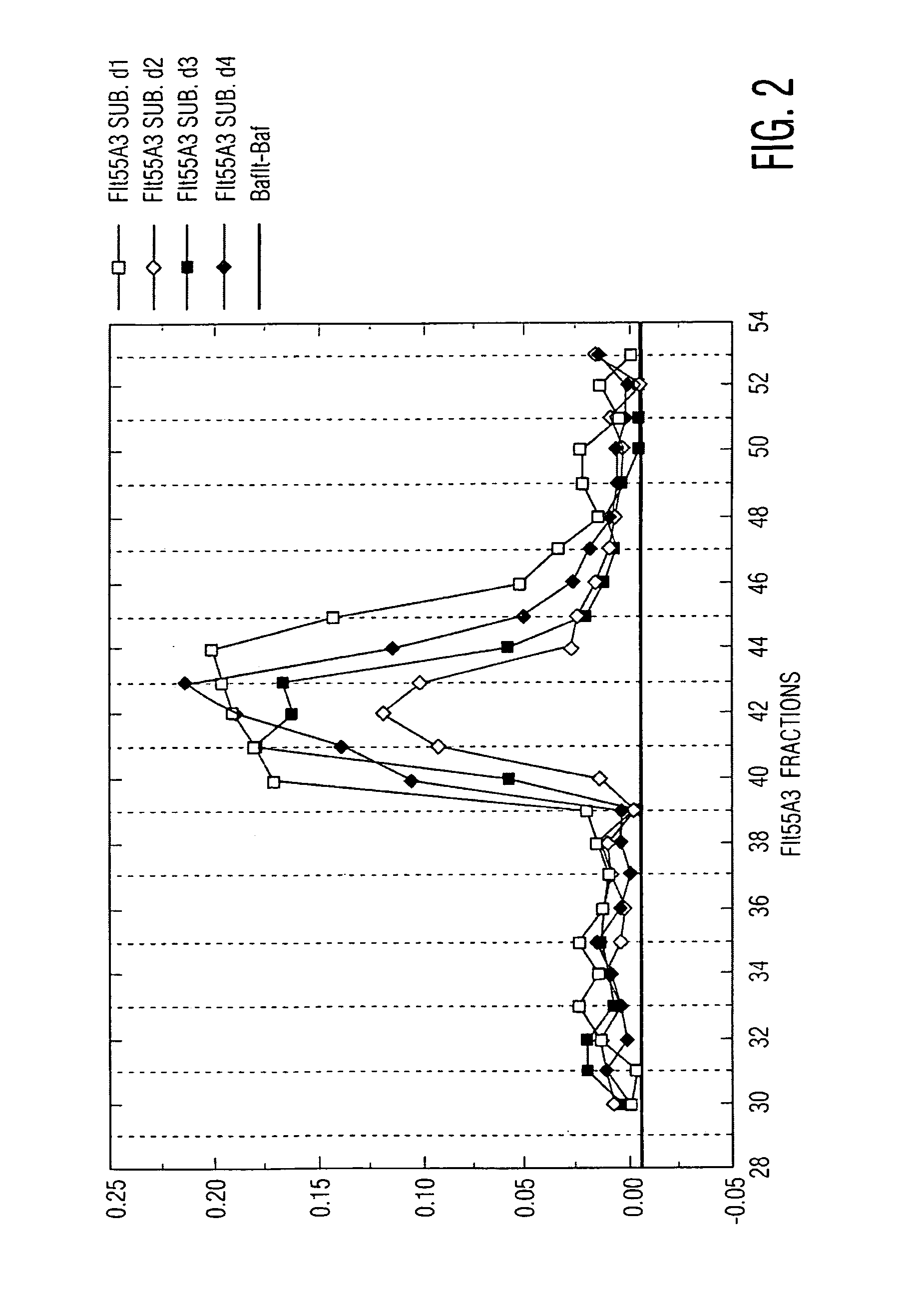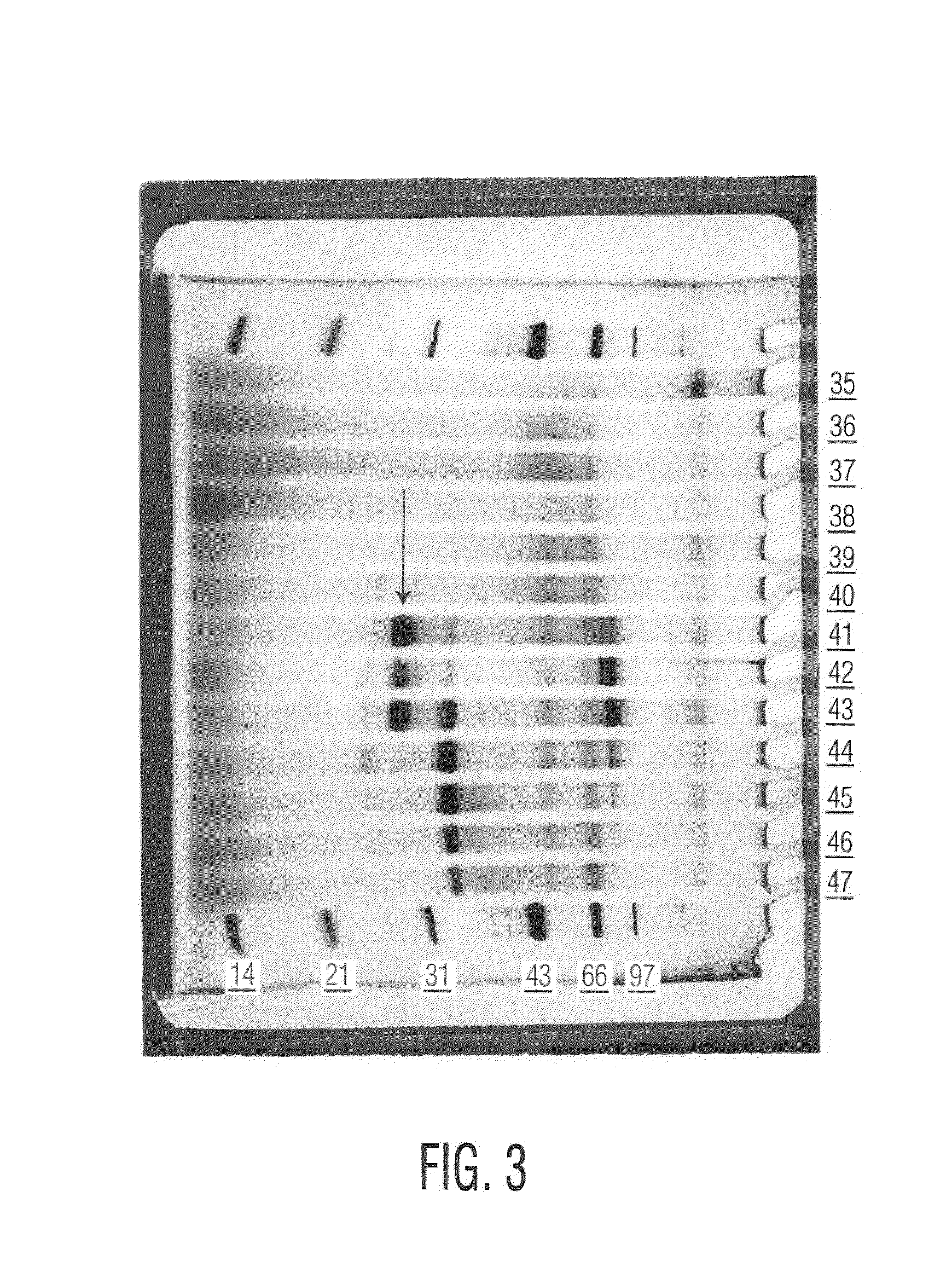Purified mammalian Flt3 ligands; agonists; antagonists
a technology of flt3 and mammalian ligands, which is applied in the field of purified mammalian flt3 ligands, can solve the problems of unmanageable regulation of the development or physiology of relevant cells, and achieve the effect of agonists and antagonists
- Summary
- Abstract
- Description
- Claims
- Application Information
AI Technical Summary
Benefits of technology
Problems solved by technology
Method used
Image
Examples
examples
I. General Methods
[0187]Some of the standard methods are described or referenced, e.g., in Maniatis, et al. (1982) Molecular Cloning, A Laboratory Manual, Cold Spring Harbor Laboratory, Cold Spring Harbor Press; Sambrook, et al. (1989) Molecular Cloning: A Laboratory Manual, (2d ed.), vols 1-3, CSH Press, NY; Ausubel, et al., Biology, Greene Publishing Associates, Brooklyn, N.Y.; or Ausubel, et al. (1987 and Supplements) Current Protocols in Molecular Biology, Greene / Wiley, New York; Innis, et al. (eds.) (1990) PCR Protocols: A Guide to Methods and Applications Academic Press, N.Y. Methods for protein purification include such methods as ammonium sulfate precipitation, column chromatography, electrophoresis, centrifugation, crystallization, and others. See, e.g., Ausubel, et al. (1987 and periodic supplements); Deutscher (1990) “Guide to Protein Purification” in Methods in Enzymology, vol. 182, and other volumes in this series; and manufacturer's literature on use of protein purific...
PUM
| Property | Measurement | Unit |
|---|---|---|
| pH | aaaaa | aaaaa |
| pH | aaaaa | aaaaa |
| temperature | aaaaa | aaaaa |
Abstract
Description
Claims
Application Information
 Login to View More
Login to View More - R&D
- Intellectual Property
- Life Sciences
- Materials
- Tech Scout
- Unparalleled Data Quality
- Higher Quality Content
- 60% Fewer Hallucinations
Browse by: Latest US Patents, China's latest patents, Technical Efficacy Thesaurus, Application Domain, Technology Topic, Popular Technical Reports.
© 2025 PatSnap. All rights reserved.Legal|Privacy policy|Modern Slavery Act Transparency Statement|Sitemap|About US| Contact US: help@patsnap.com



